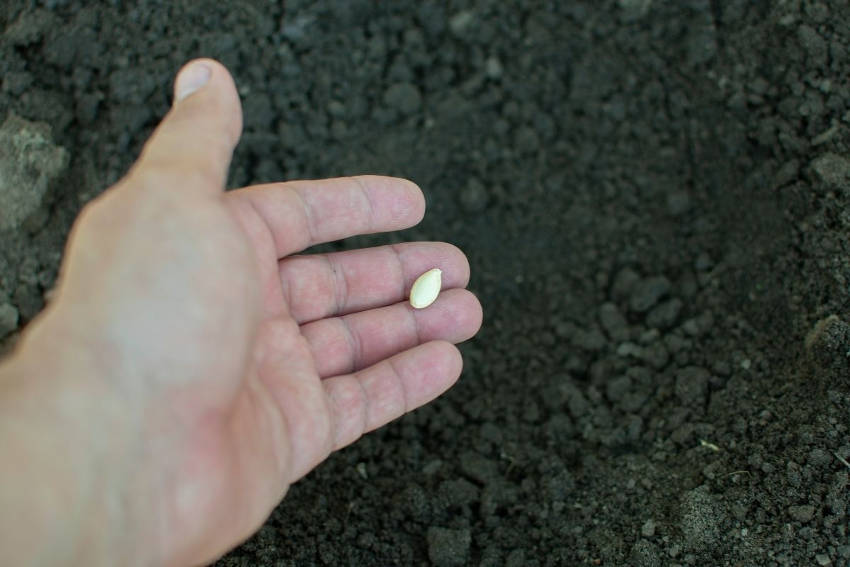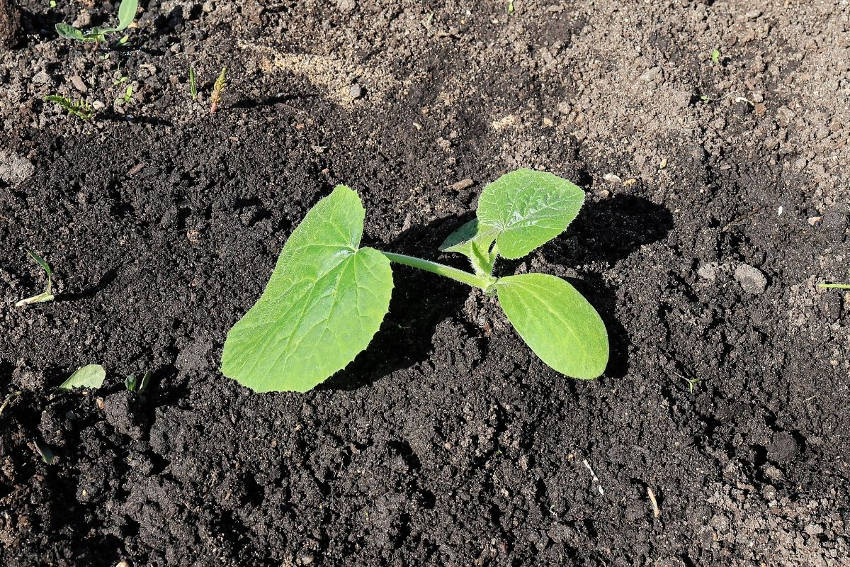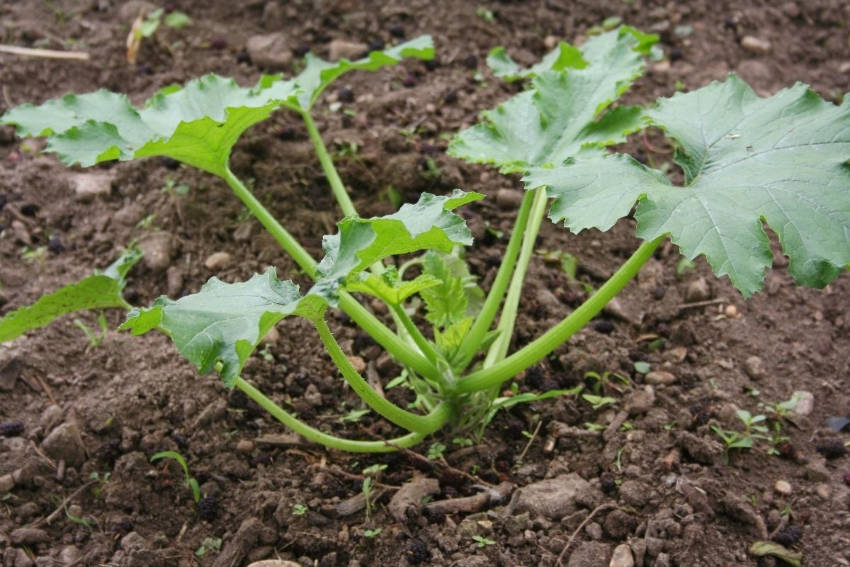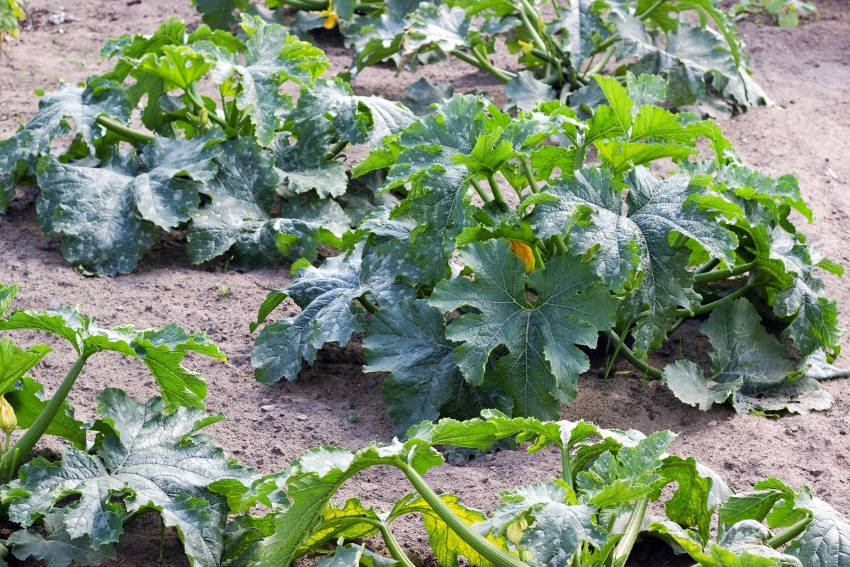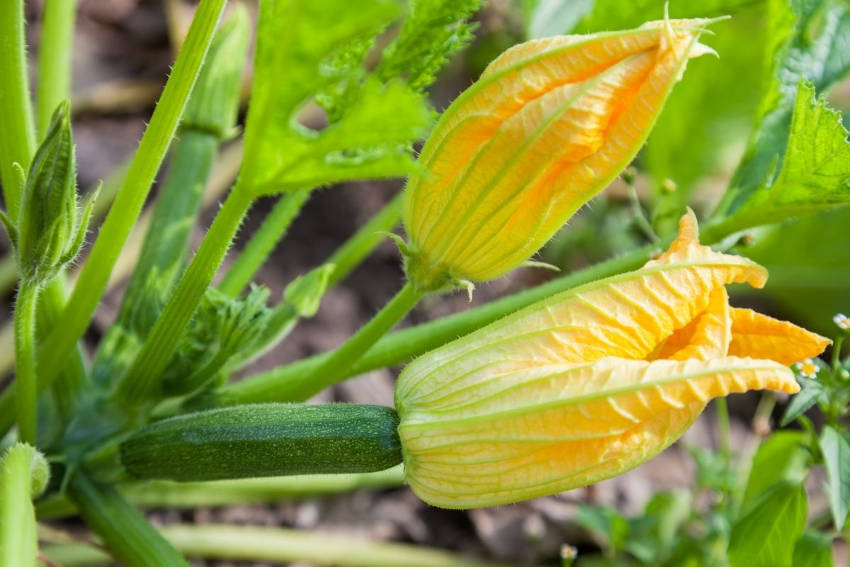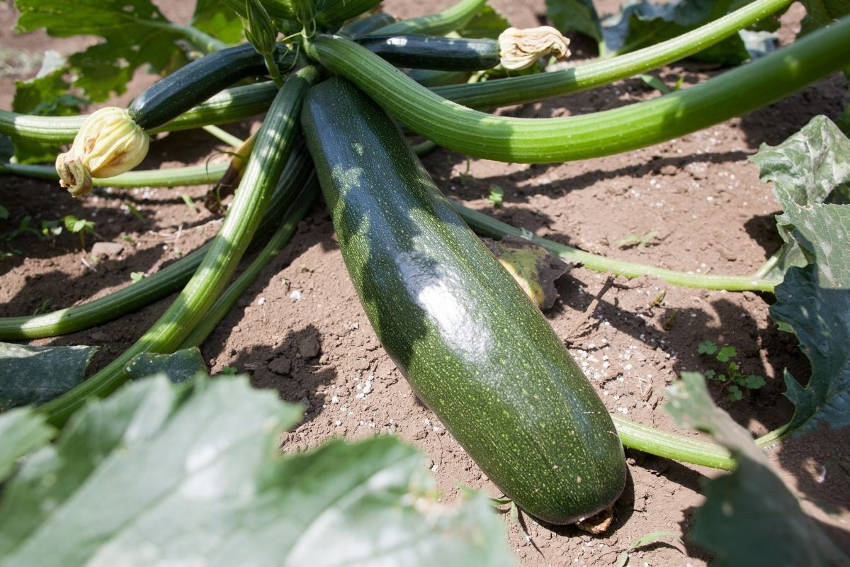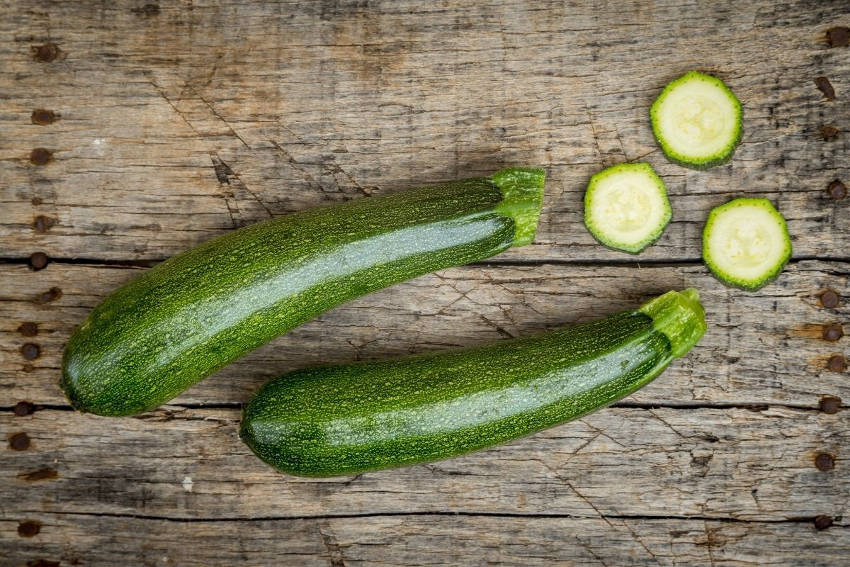Zucchini is maybe the most productive plant you could add to your veggie patch. A member of the cucurbit or squash family, it goes under the botanical name of Cucurbita pepo and is closely related to pumpkin, cucumber, and watermelon.
Like so many of today's essential food crops, the species originates in Central America, and was introduced to Europe along with tomatoes, potatoes, and peppers around five hundred years ago.
Originally grown as larger summer squash, the zucchini variant was developed by selective breeding in northern Italy, appearing from the mid-19th century onward and now grown worldwide.
The name zucchini is derived from the Italian for 'little pumpkins', and its alternative French name of courgette has similar roots, meaning 'little gourd'.
Zucchini in the Garden
Zucchini is an annual plant with large, leathery leaves and soft, hollow stems covered in stiff hair-like spines. It's commonly grown in two habits, as a compact bush variety or a trailing vine which can reach 3m in length.
The fruits are most often dark green, sausage shaped, and around 15cm in length. However, the colour can range through lighter green to golden-yellow, or even striped, and the shape can range through a tighter curve to a full globe, with these examples usually around 8-10cm in diameter.
Throughout the growing season, the plant will sprout distinctive large yellow flowers. Both male and female flowers are produced, with pollination duties generally carried out by bees and other beneficial insects.
Zucchini in the Kitchen
One of the greatest gifts zucchini offers is the edible flowers. Tender and peppery, they're almost impossible to store or transport, and so homegrown is the only realistic way to get them into your kitchen. They can be simply shredded into a salad, or more impressively, dipped into a tempura-style batter and deep fried, sometimes with a light cheese and breadcrumb filling.
On a more mainstream note, the tender fruits are highly versatile. Grate them raw into salads, or slice thinly and dress with oil and lemon juice for a light side dish.
Sliced and sauteed in butter with garlic, zucchini stew down into a sweetly savoury puree, while fried in oil they're an essential part of the French classic ratatouille. Larger specimens can be hollowed out, stuffed with a meat and rice mixture, and baked.
Zucchini also makes an excellent veggie for the BBQ, grilled either whole or in meaty chunks after marinading with woody herbs like rosemary or thyme.
Zucchini's Nutritional Value
In nutritional terms, the star of zucchini's show is vitamin C, with a typical serving providing around a third of the daily requirement. However, it's also a useful source of vitamins B6 and B2, along with minerals including potassium and manganese.
What's more, the fruit is an ideal ingredient for those looking to control their weight, as it's low in calories, low in carbs, and almost entirely fat free.
How to Grow Zucchini - Location
Zucchini is a sun-loving plant, thriving best with at least six hours of direct sunlight a day. It needs deep, well-draining soil which has ideally been enriched with plenty of well-rotted organic material to support the plant's fast growth and productive fruiting.
The compact bush varieties don't require any support, although they can be trained upward to save space. Vine varieties can be left to sprawl, or grown against a trellis or other support. They'll need to be tied in, as their underdeveloped tendrils aren't strong enough to class the plants as as true climbers.
All varieties of zucchini should be sited away from exposed areas to prevent their large leaves twisting in the wind and damaging the stems.
Sowing
In the warmer months of spring and summer, zucchini can be sown direct, with seeds spaced at least 60cm each way. Aim to grow at least two or three plants in a clump to assist with pollination.
However, this is a plant can also be started off indoors or in a greenhouse, to give greater protection from pests in the tender seedling stage, and also to avoid any risk of frost.
Around two weeks after sowing, the seedlings should have several true leaves and can be transplanted, after hardening off for a day or two if necessary. Plant the seedlings using the same 60cm spacing and again in a group of two or three plants.
Alternatively, the seedlings can be transplanted to large containers with plenty of drainage, but choose a compact bush variety for growing in pots.
Watering and Feeding
Zucchini are thirsty plants, so be scrupulous with regular watering and consider using a mulch to help retain moisture.
Always water the soil rather than the plant, and avoid splashing to reduce the risks of mildew and other fungal infections. Watering in the mornings will help reduce the overnight humidity which also encourages mildew growth.
Once flowering starts, applying an all-purpose liquid feed fortnightly will help boost yields, although most gardeners find the plants are highly productive naturally given a rich soil to begin with.
Pollination
Zucchini rely mainly on insect pollination, particularly by bees. If the local population is low, or your plants are ignored for any reason, you may see flowers dropping off the plant with no fruit growth following on. In these cases, hand pollination can be helpful.
Take a soft-bristled artist's paintbrush and gently dab pollen from the centre of the male flowers, which are the ones attached to the plant by a thin stem. Transfer the pollen to the centre of the female flowers, which can be easily identified by the more bulbous stem which develops into the fruit after successful pollination.
Harvesting
Harvesting is usually possible around five to eight weeks after planting. Once fruits reach a suitable size, around 15cm for the sausage-shaped varieties, don't delay in snipping them off the stem with a sharp knife.
Fruits left on the plant will quickly balloon to marrow size, losing their flavour and texture in the process. Even worse, allowing fruits to mature will put an end to the plant's productivity, while regularly picking smaller fruits will extend the season considerably.
If you want to try the flowers, cut only the male ones with no proto-fruit behind them to maintain future productivity. Once cut, the flowers should be used immediately.
Preserving
If you're faced with a zucchini glut - a common occurrence given the plants' famed productivity - then the fruit can be used as a base for chutney. This is especially useful for older fruit which aren't quite so appetising for ordinary cooking.
Younger fruits can be sliced, grilled, sprinkled with lemon juice or vinegar, and then covered with olive oil, and they'll keep in the fridge for a few weeks.
However, the fruit's high water content means most other preserving methods won't be hugely successful, so enjoy zucchini fresh while you can.
Common Zucchini Problems
Given the right conditions, zucchini is highly productive and more or less looks after itself. However, there are a few problems to be aware of.
- Slugs and snails can cause serious damage at the seedling stage, so sow indoors or protect as necessary. Older plants are at a much lower risk.
- Blossom end rot is a development disorder most often caused by a calcium deficiency, and made worse by inconsistent watering or a highly acidic soil. It's recognisable by the fruits turning brown, wrinkly, and malformed at the lower end. While blossom end rot looks dramatic, solving the calcium problem and upping your watering game will return the plant and future fruits to full health.
- Mildew and other fungal infections can be an issue, particularly in humid areas with poor air flow. Remove any powder-covered leaves before the whole plant becomes infected, and take care not to splash the leaves when watering.
- Aphids aren't generally a problem beyond the tender seedling stage, but don't let an infestation get out of hand.
These few potential issues aside, zucchini are one of the easiest crops to grow, and will reward what little effort they take with a long season of copious harvesting.
